
table of contents
- care
- Location
- floor
- Overwinter
- Cut
- Cut flower
- dry
- Toxicity
- Multiplication
Profile and care information open +conclude -
- Flower color
- White
- Location
- Partial shade, shady, sunny
- Heyday
- June, July, August, September
- Growth habit
- upright, spreading, bushy, perennial, subshrub, clump-forming
- height
- up to 150 centimeters high
- Soil type
- sandy, loamy, gritty
- Soil moisture
- moderately moist, fresh
- PH value
- weakly sour, sour
- Limescale tolerance
- Calcium tolerant
- humus
- rich in humus
- Poisonous
- Yes
- Plant families
- Hydrangea family, Hydrangeaceae
- Plant species
- Balcony plants, Potted plants, Cut flowers
- Garden style
- Cottage garden, flower garden, terrace garden, pot garden
Commonly enjoy Hydrangeas an ambiguous reputation. They are considered to be extremely beautiful to look at, but also extremely sensitive. The hardy snowball hydrangea Annabelle not only pleases the owner with an extremely lush flowering, but is also extremely hardy. With a height of up to 1.5 meters, Hydrangea arborescens are impressive plants that get along well even in cool climates.
care
General information on care
Hydrangeas are among the thirstiest Garden plants, the snowball hydrangea is no exception here. A generous dose of fluids is therefore extremely important when it comes to care. It is poured with rainwater, even twice a day in the summer months.
- Watering in the morning and in the evening makes sense
- Water is given directly to the plant stock
- Waterlogging must be prevented by means of drainage
- The next watering must be done when the substrate is still slightly damp
- Young plants need water up to three times a day
- water sufficiently twice a week in winter
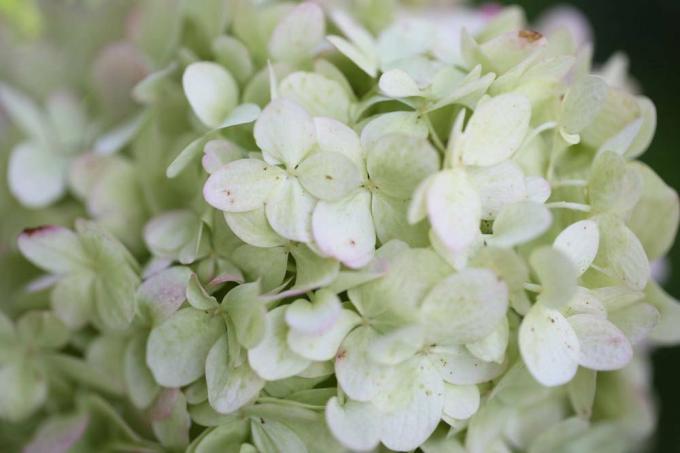
Fertilizing is useful and important with the snowball hydrangea. Plant lovers should refrain from using blue grain as the phosphorus content is too high. A special hydrangea fertilizer that can be given every four weeks is ideal.
Location
Hydrangea arborescens is also commonly referred to as forest hydrangea. The snowball hydrangeas need a place in the light shade, but can also tolerate a location in full sun for a short time. However, the snowball hydrangea Annabelle must not be exposed to direct sunlight for too long as there is a risk of sunburn.
In winter, an outdoor location is acceptable when the snowball hydrangea is in the bed. In the case of potted plants, it makes sense to transfer them to the warmth, as otherwise frost damage will occur to the roots. At outside temperatures of more than minus 25 degrees, Beethortensias must also be protected from frost with suitable measures.
The most important facts about the location:
- in the morning and evening sunshine is ideal
- Potting soil should be humic, well-drained and fresh
- the perfect one PH value should be between 5.5 and six
- Snowball hydrangeas can be grown in the tub
- Container plants benefit from the use of rhododendron soil
- Drainage is essential in the bucket

You can plant the snowball hydrangea at any time of the year, but spring is best for this. This is because Hydrangea arborescens will already have its first flowering period in the coming summer if planted early.
floor
The right floor
The snowball hydrangea feels good near trees, which is due to its origin. In the wild it has developed as an undergrowth of large trees and therefore the plants prefer forest-like soil. The humus content can be around 20 percent, a meadow soil has comparatively low values at five percent.
If the snowball hydrangea is grown in the bucket, rhododendron soil from specialist shops is ideal. It has a good pH and provides the necessary nutrients.
Overwinter
Wintering of the snowball hydrangea
Hydrangeas are considered to be sensitive to frost, but Hydrangea arborescens is hardy and frost hardy up to minus 25 degrees. In order to avoid frost damage, the sensitive roots should be covered with brushwood, straw and leaves. For young plants that experience their first year in freedom, a burlap cover must be put over the plant.
Warning, Annabelle is very popular as a hydrangea in the bucket, winter protection is urgently required here. The root balls can freeze in the bucket and cause permanent damage.

Important tips for wintering:
- Bedding plants can tolerate temperatures down to minus 25 degrees
- Covering with brushwood and straw helps against frost damage
- Container plants need to be moved to a warm place
- The ideal temperature for potted plants is between 16 and 18 degrees
- in winter the plant is only slightly thirsty
- Watering twice a week is sufficient
Cut
It is necessary to prune the snowball hydrangea heavily once a year. The best time is in spring between March and April. The pruning is necessary because the flowers grow on the annual wood every year. By pruning, a lush flowering is guaranteed also in the next year. By the way, the pruning can also be done in winter if necessary, but only at a frost-free time.
Tips and tricks for cutting:
- cut to about 15 cm above the ground
- Tools must be disinfected before use
- Pruning is best done in spring
- in winter it is possible to cut when there is no frost
- there is no need to make a cut in the first year
- Plant sap is poisonous - gloves are recommended
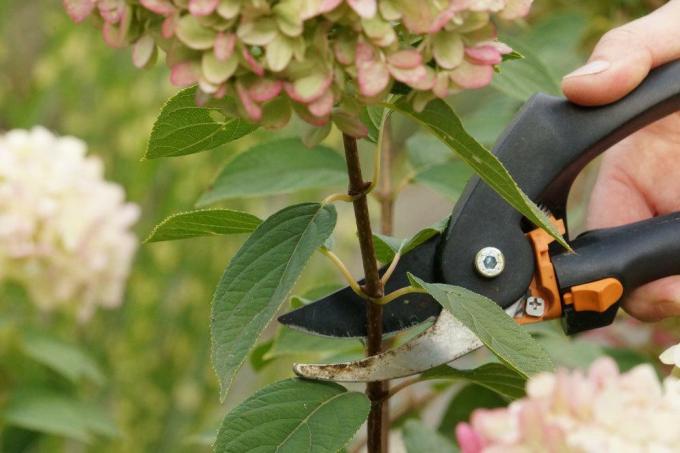
Cut flower
Cut for the vase
Of course, the snowball hydrangea is a wonderful eye-catcher in every vase. A small rule of thumb is that the more mature the flower, the longer it will last in the vase. The pretty snow globes should therefore be cut in mid-August at the earliest. A courageous grip with the hand indicates whether the flowers already have the desired stability. It is important that the green part of the stem is cut diagonally so that the plant can soak up nutrients from the water.
dry
Let snowball hydrangea dry
The impressive flower balls of Hydrangea arborescens are far too beautiful to be easily disposed of after flowering. Many hobby gardeners have therefore started to dry the plant. A simple and inexpensive method like the following is therefore a good idea.
- fully flowering branches are cut off generously and at an angle
- the branch is wrapped with a cord
- the stems are hung upside down in an airy place
- the drying process takes around three months
- the individual flowers must keep a distance from one another
- After drying, the flowers should be sprayed with hairspray
Drying with the help of silica gel is somewhat more expensive, but also significantly more effective. This is a drying gel that is often added to shoes, electrical appliances or new leather bags. Liquids are completely absorbed by silica gel within a very short time.
- Silica gel can be purchased from the craft store
- Hydrangea is cut in full bloom
- in a long vessel the bottom is covered with silica gel
- The flower with a stem is placed in the container
- the entire branch must be covered with silica gel
- A lid is placed on the long vessel
- the drying process takes about a week
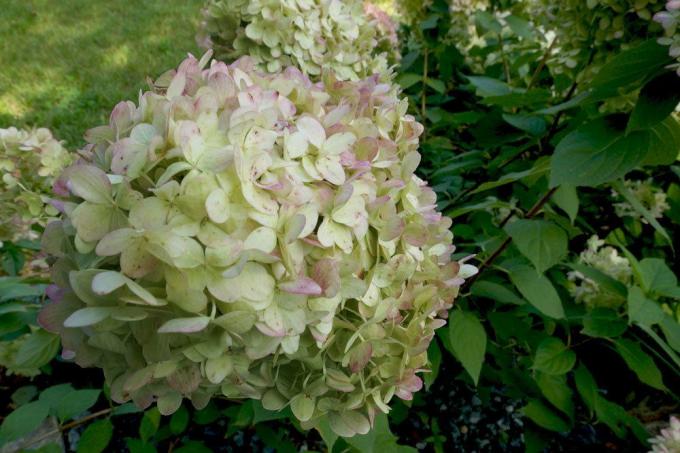
Toxicity
Roughly speaking, hydrangeas consist of three ingredients:
- Saponins
- Hydrangenol
- Glycoside hydrangin
All three components are toxic and should therefore not be consumed. Sometimes hydrangeas are seen and smoked as a substitute for cannabis. We advise against this with a reference to danger to life!
Smoking releases hydrogen cyanide, which destroys red blood cells. This in turn means that oxygen transport in the body is no longer possible.
Attention: Hydrangeas are also poisonous for pets and farm animals!
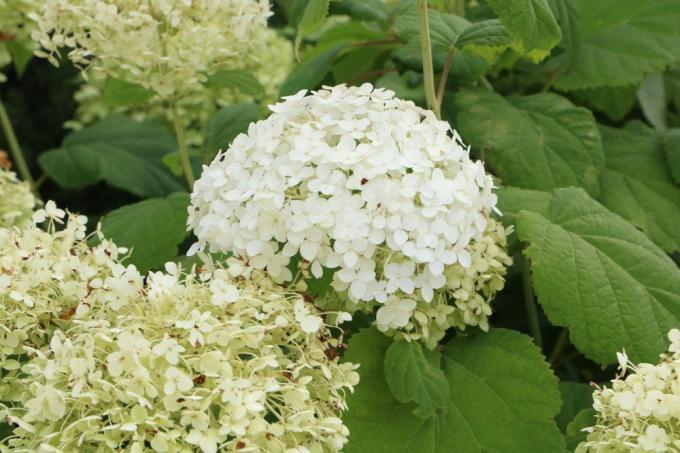
Multiplication
Propagate snowball hydrangea
The snowball hydrangea is very popular and it goes without saying that hobby gardeners would like to multiply their plants. This can be done in a number of ways.
- Propagate by cuttings
- Increase by lowering
Cuttings
Since Hydrangea arborescens is cut back in March or April, cuttings are created automatically. Choose the strongest specimens and cut them to a length of 15-20 cm. to have. Two eyes should be available in the upper and lower part of the cutting.
50 percent of the cuttings are put into the substrate, the rooting only takes a few days. It is necessary to water every day for the first six weeks to keep the plants moist.
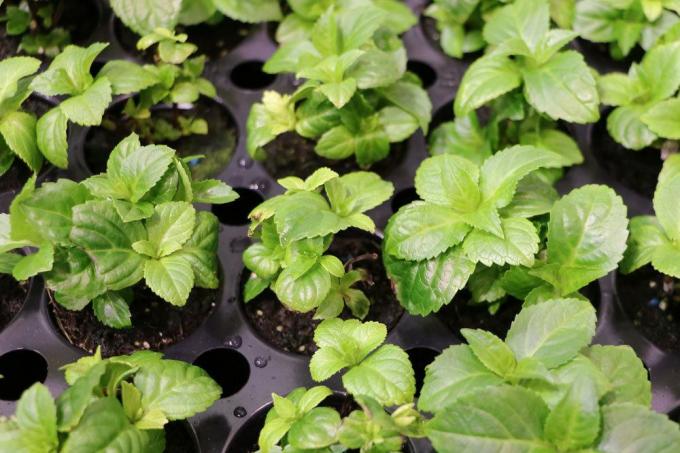
Sinker
Propagation by lowering works wonderfully with snowball hydrangeas. During the summer months, a healthy shoot can be drawn to the ground. A floor gutter that was drawn beforehand serves as a bed for the shoot. This is now covered with earth and weighted down with some stones.
Important: The end of the instinct must look out!
Two to three light cracks in the shoot have a positive effect on the rooting. As soon as the roots are pronounced, the sinker can be cut off by the mother plant and moved to its new location.

